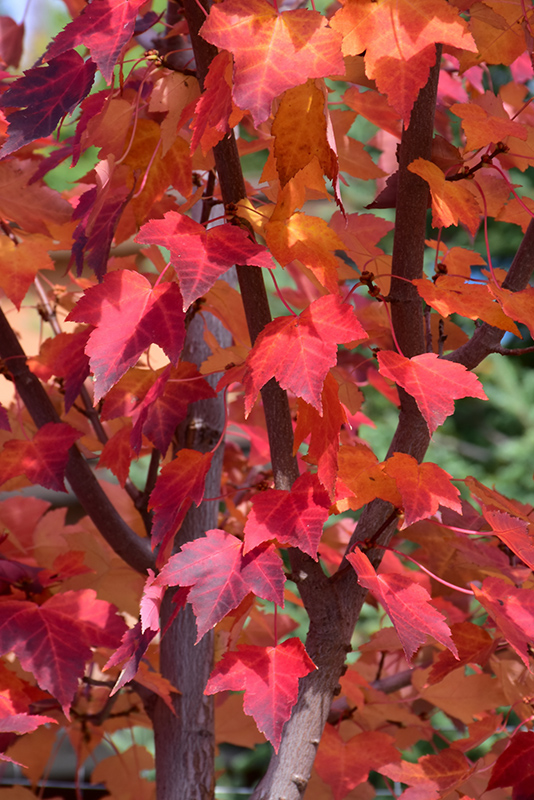Height: 30 feet
Spread: 15 feet
Sunlight:
![]()
Hardiness Zone: 2
Other Names: Swamp Maple, Scarlet Maple
Brand: Jeffries Nurseries
Description:
A wonderful selection of red maple featuring a narrow, upright habit of growth and outstanding bright red fall color year after year, that colors earlier than others of this species; resistant to frost cracking, but intolerant of alkaline soils
Ornamental Features
Prairie Rouge® Red Maple is primarily valued in the landscape for its ornamental upright and spreading habit of growth. It features showy clusters of red flowers along the branches in early spring before the leaves. It has forest green deciduous foliage which emerges red in spring. The lobed leaves turn an outstanding red in the fall. The furrowed silver bark and brick red branches add an interesting dimension to the landscape.
Landscape Attributes
Prairie Rouge® Red Maple is a dense deciduous tree with an upright spreading habit of growth. Its average texture blends into the landscape, but can be balanced by one or two finer or coarser trees or shrubs for an effective composition.
This is a relatively low maintenance tree, and should only be pruned in summer after the leaves have fully developed, as it may 'bleed' sap if pruned in late winter or early spring. It has no significant negative characteristics.
Prairie Rouge® Red Maple is recommended for the following landscape applications;
- Accent
- Shade
- Vertical Accent
Planting & Growing
Prairie Rouge® Red Maple will grow to be about 30 feet tall at maturity, with a spread of 15 feet. It has a high canopy with a typical clearance of 6 feet from the ground, and should not be planted underneath power lines. As it matures, the lower branches of this tree can be strategically removed to create a high enough canopy to support unobstructed human traffic underneath. It grows at a medium rate, and under ideal conditions can be expected to live for 90 years or more.
This tree should only be grown in full sunlight. It is quite adaptable, prefering to grow in average to wet conditions, and will even tolerate some standing water. It may require supplemental watering during periods of drought or extended heat. It is not particular as to soil type, but has a definite preference for acidic soils, and is subject to chlorosis (yellowing) of the foliage in alkaline soils. It is somewhat tolerant of urban pollution. This is a selection of a native North American species.


